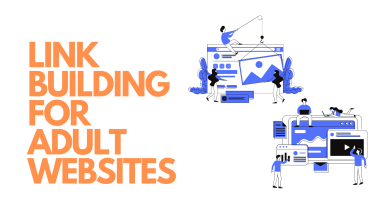Starbucks Coffee Company

Starbucks
Starbucks Corporation is an American multinational chain of coffeehouses and reserves with its headquarters at Seattle, Washington. It is the largest coffeehouse chain.
In November 2021, Starbucks operated 33,833 locations in more than 80 countries, 1544 of them within the United States. In Starbucks’ U.S.-based stores, more than 8,900 are owned by the company, and the rest are licensed.
The growth of the second wave of the coffee culture is usually attributable to Starbucks who provided a wider selection of coffee-related experiences. Starbucks serves cold and hot drinks, whole bean coffee, micro-ground instant espresso, coffee caffe latte loose-leaf and loose-leaf teas and juices, Frappuccino drinks along with snacks, pastries, and cakes. Some of the items are seasonal or specifically based on the location of the shop. The country of origin will determine the offerings. many locations offer free Wi-Fi internet.
Starbucks Guatemala prices
Overview of the company
Starbucks was established in 1971 in 1971 by Jerry Baldwin, Zev Siegl as well as Gordon Bowker at Seattle’s Pike Place Market. In the early 1980s they sold the company to Howard Schultz who – after an official trip in Milan, Italy – decided to transform the coffee shop into a cafe that served espresso-based drinks.
As the chief of staff from the year 1986 until 2000, Schultz’s term led to a rapid growth of Starbucks initially in Seattle and later all over to the West Coast of the United States. Schultz succeeds Orin Smith, who managed the business for five years, and established Starbucks as a major company of fair trade tea.
This led to an increase in the sales to $5 billion. Jim Donald served as chief executive officer from 2005 until 2008, coordinating a massive increase in earnings. Schultz returned as CEO in the crisis in the financial markets of 2007-2008 and spent the next decade expanding the market share of the company and expanding its offerings and reorienting its brand around corporate social accountability.
Kevin Johnson, the current CEO succeeded Schultz in the year 2017. On March 20, 2022 Starbucks made it clear that Schultz will return to the position of CEO in April 2022.
Non-dairy milk products
The year was 1997 when Starbucks began offering non-dairy products in the U.S. stores with the introduction of soy milk.
In 2007 Starbucks discontinued using milk from cows that had been treated with rBGH. The company in June of 2009 started selling baked goods and salads without excessively high fructose corn syrup, or artificial ingredients. The move was intended to draw health-conscious and price-conscious consumers.
Ethos water
Ethos water is a brand of bottle water bought through Starbucks since 2003. It is offered at various locations across North America. Ethos bottles are marked with prominently branded labels that reads “helping children to access water that is clean water,” referring to the fact that US$0.05 from every US$1.80 container that is sold (US$0.10 for each bottle sold in Canada) is used to finance water purification water projects in the most deprived areas.
Instant coffee and capsules of coffee
The month of March was when Starbucks launched a range of instant-coffee packets named VIA “Ready Brew”. The product was launched at New York City with subsequent trials of the product at Seattle, Chicago, and London.
Most people couldn’t discern the difference between instant fresh-brewed and instant coffee. Analysts from the financial world speculated that with the introduction of instant coffee, Starbucks might be able to lower its value for their own name.
Drinks with alcohol
In the year 2010, Starbucks began selling alcoholic beverages in some of its stores across the United States. Then, in August of 2014 Starbucks inaugurated its very first location at Williamsburg, Brooklyn which by the time it was one of thirty stores that sold wine and beer.
Fruit juices, drinks containing fruit and sodas
On the 10th of November 11 in 2011, Starbucks bought the juice business Evolution Fresh for US$30 million in cash.
Since March of 2012, Starbucks started selling frozen Starbucks Refresher drinks that contain an extract of green coffee.
The drinks are fruit-flavored and are caffeine-based, yet claimed to have no coffee flavor. Starbucks’s process of extracting green coffee involves making the beans soak in water.
Energy drinks
In January 2022 Starbucks introduced a range of energy drinks that can be canned known as “Baya.” The beverage contains some caffeine from coffee plant.
Seasonal cups
Each year from November to January, Starbucks releases new holiday products, including paper cups featuring diverse designs for the holidays.
Coffee aged in barrels
In March of 2017, Starbucks announced the launch of two limited-edition drinks made of beans that have been that have been aged in whiskey barrels at their Seattle roastery.
Starbucks’s barrel-aged coffee is sold with a small amount made of fresh Starbucks Reserve Sulawesi beans. They will be poured into whiskey barrels that are sourced from Washington state.
Starbucks Card and program for loyalty
In May 2008 the program of loyalty was created to registered users of Starbucks Card.
Starbucks Guatemala prices
Find Latest insight Business in 360 Postings



